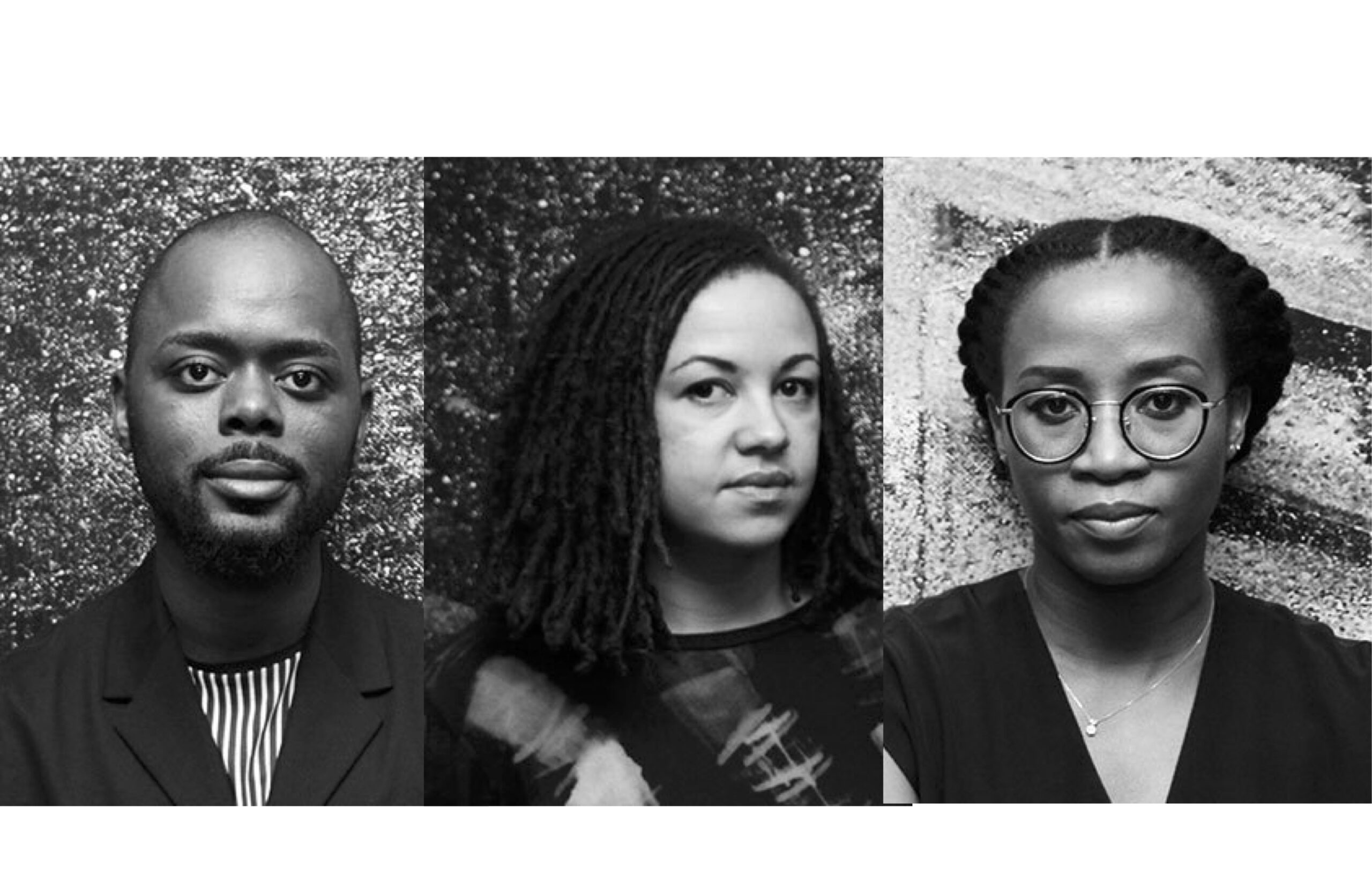The Àkéte Art Foundation is pleased to announce the curators for the 2019 edition of the Lagos Biennial: Antawan I. Byrd , Hansi Momodu-Gordon, and Tosin Oshinowo .

Antawan I. Byrd (left), Hansi Momodu-Gordon (center), and Tosin Oshinowo (right), courtesy of Lagos Biennale
For the forthcoming edition, the three curators will collaboratively devise the biennial’s curatorial framework encompassing exhibitions, performances, publishing projects, and public programmes.
“The three curators come from diverse backgrounds with a wealth of international experience across the fields of contemporary art, architecture, and design,” states Folakunle Oshun, the biennial’s founding director. “All three curators have strong ties to the Lagosian arts and culture sector. Oshinowo is currently based in Lagos and is a lead architect at cmDesign Atelier (cmD+A). Through her architectural and design practice, she has established herself as an innovative thinker and leading authority on the city’s built environment. Meanwhile Byrd, an assistant curator of photography at the Art Institute of Chicago, and Momodu-Gordon, an independent curator based in London, have both lived and worked in Lagos during pivotal points of transition in the city’s contemporary art sector. Both were curators at the Centre for Contemporary Art, Lagos and have worked consistently with some of the city’s leading artists and institutions. I’m excited that the three curators have decided to focus on the intersections of art, architecture, and urbanism for the 2019 edition. Through this focus, the second edition of the biennial is poised to engage pertinent socioeconomic and political issues stemming from the astonishing shifts in the city’s spatial elaboration over the past two decades. I’m really looking forward to seeing what they develop,” Oshun notes.
The curators will continue to develop the programme for the 2019 edition through the end of the year, before sharing additional details in early 2019. However, they have already landed on a title for the forthcoming edition, How to Build a Lagoon with Just a Bottle of Wine? The title is adapted from the poem, “A Song For Lagos” by the Nigerian writer Akeem Lasisi. During the kick-off event, the curators framed the title as a provocation for artists and the public to meditate on the history and present makeup of city’s built environment. For the curators, the title conjures the impossible or herculean, which speaks to the city’s “can-do” spirit in the face of seemingly insurmountable social, political, and economic obstacles just as it alludes the nascent state of the biennial itself as a platform.
How To Build a Lagoon with Just a Bottle of Wine?
We live in, and in relation to various kinds of environments. Architecture and the built environment shapes urban experience, impacting our sense of belonging and understanding of heritage. This physical environment is formed of the material remains of ‘visions of the future’, left for new generations. Climate change is a serious threat to our natural environment and is warming our planet. Rising sea levels and increasing extreme weather events are changing the ways people can and will live. The conditions of a particular political environment allow for atrocities such as the Atlantic Slave Trade to seem normalised or to become too easily forgotten, just as particular social environments can act to suppress or support a person’s sexual orientation or gender identification.
An environment can be made up of living or non-living things, of concepts and belief systems. Environments are natural or man-made, and are increasingly inhabited and navigated through digital and virtual media.
With an estimated 21 million inhabitants, Lagos ranks among the largest cities in the world and is the most populous in Africa. In recent decades, the city’s built environment has expanded exponentially through large-scale land reclamation initiatives, major industrial and luxury development projects, new transportation infrastructures, and sprawling housing settlements. This steady growth has transformed and amplified Lagos’s distinctive history as a cosmopolitan hub, and incubator of cultural and technological innovation. Yet such rapid change continues to raise pressing questions, facing cities across the globe, about the impact of urbanisation on conceptions of citizenship, the role of information systems, the sustainability of natural resources, and socio-economic equality.
The forthcoming biennial titled, How To Build a Lagoon with Just a Bottle of Wine? will take the city of Lagos as its epicenter and point of departure for a broader investigation on how contemporary artists, designers, and other creatives, are responding to the challenges and possibilities of environments today. Inspired by lines from Nigerian writer Akeem Lasisi’s poem “A Song For Lagos,” the biennial’s title calls to mind the lagoons and waterways, that founded the city; the centuries-long histories of trade that have transformed Lagos; and daily herculean and inconceivable activities that support our burgeoning metropolis.
The second edition of the biennial will open up conversations and invite reflection on environments across group and solo exhibitions, installations, and public programmes.
The Lagos Biennial II 2019 will take place 26 October till 30 November 2019 on Lagos Island.
More Editorial